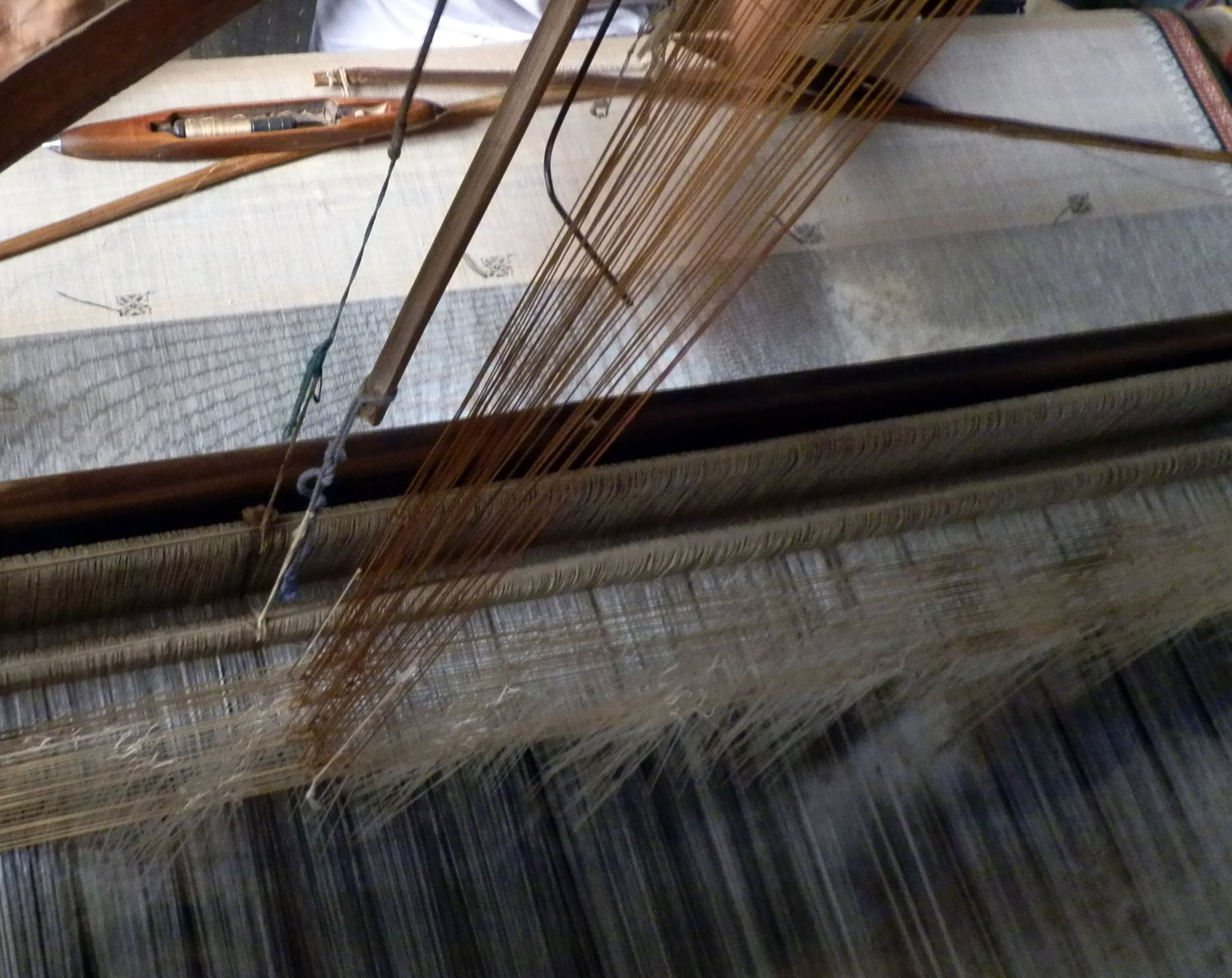My quest to learn more about my birth place Umred led me to a little house with a man (Shavkar Dashrath Shankarpurkar) working behind a huge piece of equipment, which seemed like an organized web of threads and took up half of the space in that room. And, I was like whoa! This seems like an old work-from-home method of earning.
I was told that back in the 1950s most houses in Umred had a weaver and this equipment. The handloom industry was thriving and textile weaving ruled this place. It’s said that saris were hand woven with real gold and silver threads. These weavers had a lot of faith in their business and preferred that their kids learnt this skill instead of going to school. People earned more from this occupation than any other government jobs at that time.
[singlepic id=15 w=520 h=440 float=center]
Photo is courtesy of Mr. Chandrakant Wegad
Usually the whole family of the weaver would be involved in the making of handloom products – from the spinning of yarn into thread, to loading the weave. I was also told that in those times’ GIRLS’ PARENTS would demand dowry for marriage because they would lose a resource. Around 1970s however, the party ended and this small industry started to feel the impact of new and huge textile mills, increased competition and change in the lifestyle.
Maharashtra State Handlooms Corporation Ltd., Nagpur was established in the year 1971 by the Government of Maharashtra with the objective of providing employment to these handloom weavers of the state. Towards this objective, the MSHC provided raw material to the weavers and bought the finished product or employed them on wages for weaving.
In the year 1976, the Central Government introduced the Janata cloth scheme or the controlled cloth scheme which also helped the industry. Later, in 1998 the Govt. ruled out the revival of this scheme, and the condition of this industry worsened still.
Today, as informed by Shavkar Dashrath Shankarpurkar (in the picture) Umred has about 11 or 12 weavers.
Also, not relevant to the article but very important:
While dowry is an ugly reality of Indian society, more people are now working towards eradicating this practice. If you have missed the episode of Satyamev Jayate on the dowry system, then, please click here to watch the episode).

I greatly appreciate your work. You have to keep it up.
Thank you for the motivation Oxyelite.